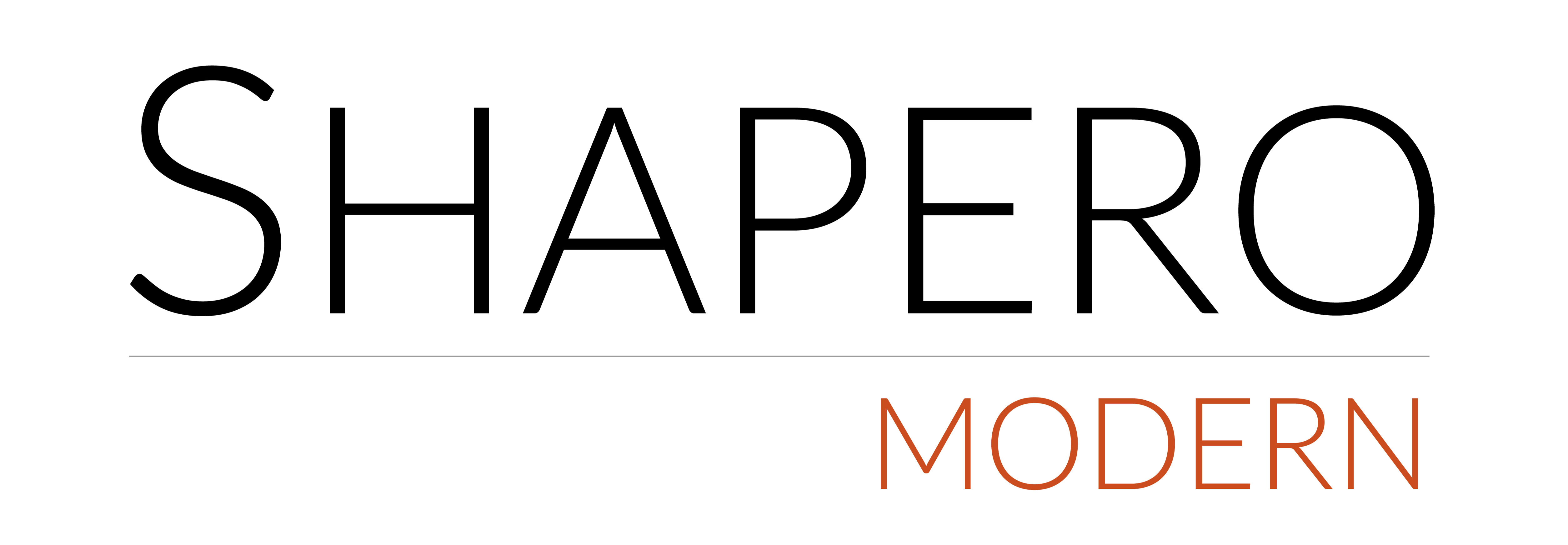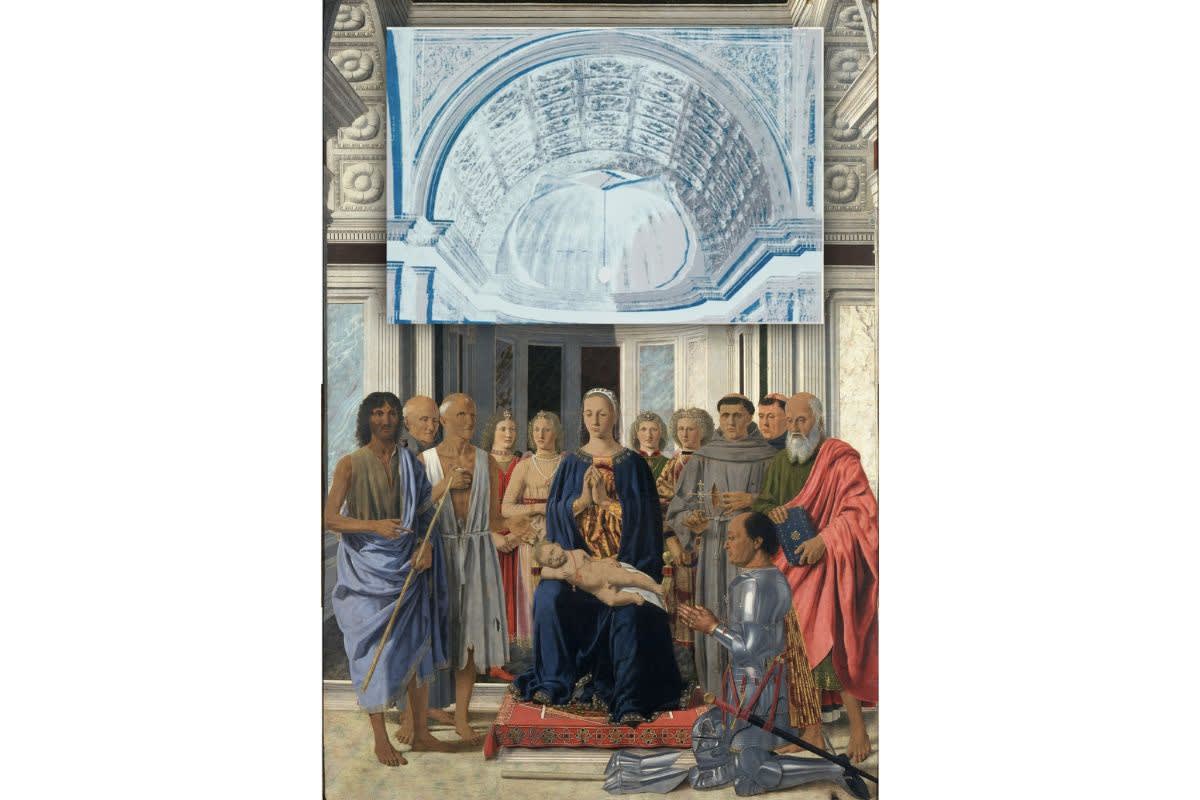
Warhol’s Details of Renaissance Paintings at Art Miami 2024
In 1984, Andy Warhol’s work took a transformative turn with his Details of Renaissance Paintings series, marking a departure from his usual celebrity portraits and pop iconography. We are thrilled to announce that we will be showcasing three works from this momentous series at Shapero Modern’s Art Miami booth AM320 from 3-8 December 2024.
This series features cropped images of Old Master paintings reimagined in Warhol’s signature vibrant style, stripping each original work of its historical narrative, and focusing instead on their value as symbols of popular culture. The simplicity of the silkscreen printing process, known for its capacity to multiply images, deliberately mocks the painstaking effort behind the creation of the original masterpieces, thus acting as a critique of the commodification of art.
This series features cropped images of Old Master paintings reimagined in Warhol’s signature vibrant style, stripping each original work of its historical narrative, and focusing instead on their value as symbols of popular culture. The simplicity of the silkscreen printing process, known for its capacity to multiply images, deliberately mocks the painstaking effort behind the creation of the original masterpieces, thus acting as a critique of the commodification of art.
The Pop Venus

Sandro Botticelli, The Birth of Venus, 1484-1486 [with]
Andy Warhol, Details of Renaissance Paintings:
Sandro Botticelli, Birth of Venus, 1482, 1984
Andy Warhol, Details of Renaissance Paintings:
Sandro Botticelli, Birth of Venus, 1482, 1984
Warhol's take on Botticelli's iconic Birth of Venus places the Roman goddess within a modern, consumerist context. The classical symbolism of beauty and elegance has been repurposed, with Venus now representing the idea of commercialised beauty. The vibrant colours and bold outlines transform Botticelli's delicate, ethereal Venus into an emblem of mass production and consumer culture. This shift underscores the postmodern critique of originality and authorship, suggesting that the image’s value lies in its recognisability and reproducibility rather than its unique provenance. Cropping out the larger picture strips the work of its meaning, leaving us to focus on the young goddess’ face and flowing hair, a more shallow perspective than that of the mythological significance of the birth of a goddess.
Changing the Narrative
Paolo Uccello, Saint George and the Dragon, 1460 [with]
Andy Warhol, St George and the Dragon, Paulo Uccello, 1460, from Details of Renaissance Paintings, 1984
Andy Warhol, St George and the Dragon, Paulo Uccello, 1460, from Details of Renaissance Paintings, 1984
St George and the Dragon, Paulo Uccello, 1460, from Details of Renaissance Paintings (1984) is Warhol’s interpretation of Paolo Uccello’s masterpiece and exemplifies the innovative fusion of classical art with modern Pop sensibilities. By isolating and magnifying specific elements of Uccello's work, Warhol redirects the narrative focus. Warhol's choice to crop in on the damsel and the dragon, while omitting St. George, shifts the viewer's perspective from one of heroic conquest to an ambiguous interaction between fear and beauty. This change suggests a deeper exploration of unconscious desires and anxieties. The vibrant, neon colours that Warhol employs starkly contrast with Uccello’s muted Renaissance palette, adding a layer of irony and contemporary critique. Warhol’s rendition invites viewers to appreciate the timeless nature of classical motifs, while his pop art treatment comments on the notion of high art exclusivity and originality.
Warhol’s Ostrich Egg
Piero della Francesca, Madonna and Child with Saints, Angels and Federico da Montefeltro (San Bernardino Altarpiece), 1472–1474 [with]
Andy Warhol, Piero della Francesca, Madonna del Duca da Montefeltro, from Details of Renaissance Paintings, 1984
Andy Warhol, Piero della Francesca, Madonna del Duca da Montefeltro, from Details of Renaissance Paintings, 1984
Warhol’s screenprint based on Piero della Francesca’s ‘Madonna del Duca da Montefeltro’ features a semi-dome with an ostrich egg, cropped from the original painting. Warhol’s bold choice to highlight architectural details rather than the figurative scene of the Virgin and Child might be seen as a postmodern deconstruction of the sacred narrative. By focusing on the semi-dome and the egg, Warhol decontextualises these elements within a secular, consumerist framework, challenging the viewer to reconsider the nature of religious iconography in contemporary culture.
Conclusion
Warhol's ‘Details of Renaissance Paintings’ series not only reinterprets classical artworks but also engages in a broader dialogue about the nature of art, authorship, and consumption in the postmodern age. By cropping and altering these compositions, Warhol critiques traditional notions of art’s sanctity and originality, embodying a blend of historical reverence and contemporary critique.
Explore these impactful works online or at Shapero Modern’s Booth AM320 at Art Miami this December and let us help you find the perfect piece to enrich your space with a taste of both history and modernity.
Explore these impactful works online or at Shapero Modern’s Booth AM320 at Art Miami this December and let us help you find the perfect piece to enrich your space with a taste of both history and modernity.



